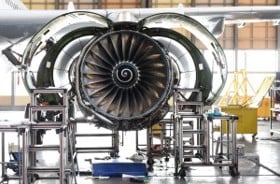 The International Air Transport Association (IATA) anticipates that severe supply chain issues will continue to impact airline performance into 2025, leading to increased costs and limited growth.
The International Air Transport Association (IATA) anticipates that severe supply chain issues will continue to impact airline performance into 2025, leading to increased costs and limited growth.
In its latest airline industry outlook, IATA highlighted the scale of the challenges facing airlines due to supply chain disruptions:
The average age of the global fleet has risen to a record 14.8 years, up from the 13.6-year average for the period 1990-2024.
Aircraft deliveries have significantly declined from the peak of 1,813 aircraft in 2018. The estimate for 2024 deliveries is 1,254 aircraft, a 30% shortfall from initial predictions. In 2025, deliveries are forecasted to rise to 1,802, still below earlier expectations of 2,293 deliveries, with further downward revisions possible.
The backlog of unfulfilled orders for new aircraft has reached a record high of 17,000 planes. At current delivery rates, it would take 14 years to fulfill these orders, double the six-year average backlog for 2013-2019. However, the waiting time is expected to shorten as delivery rates increase.
Approximately 14% (around 5,000 aircraft) of the total fleet (35,166 as of December 2024, including Russian-built aircraft) are “parked.” While this has improved recently, parked aircraft remain 4 percentage points higher than pre-pandemic levels (equivalent to about 1,600 aircraft). Additionally, 700 aircraft (2% of the global fleet) are parked for engine inspections. This situation is expected to persist into 2025.
Willie Walsh, IATA’s Director General, commented on the impact of supply chain issues: “Supply chain issues are frustrating every airline with a triple whammy on revenues, costs, and environmental performance. Load factors are at record highs, and there is no doubt that if we had more aircraft, they could be profitably deployed, so our revenues are being compromised.”
“Meanwhile, the aging fleet that airlines are using has higher maintenance costs, burns more fuel, and takes more capital to keep it flying. And, on top of this, leasing rates have risen more than interest rates as competition among airlines intensified the scramble to find every way possible to expand capacity. This is a time when airlines need to be fixing their battered post-pandemic balance sheets, but progress is effectively capped by supply chain issues that manufacturers need to resolve.”
IATA also noted that persistent supply chain issues are at least partially responsible for two negative developments:
Fuel efficiency (excluding the impact of load factors) remained unchanged between 2023 and 2024 at 0.23 liters/100 available tonne kilometers (ATK), a step back from the long-term trend of annual fuel efficiency improvements in the range of 1.5-2.0%.
Exceptional demand for leased aircraft pushed leasing rates for narrow-body aircraft to levels 20-30% higher than in 2019.
Walsh added, “The entire aviation sector is united in its commitment to achieving net zero carbon emissions by 2050. But when it comes to the practicality of actually getting there, airlines are left bearing the biggest burden. The supply chain issues are a case in point. Manufacturers are letting down their airline customers, and that is having a direct impact on slowing down airlines’ efforts to limit their carbon emissions. If the aircraft and engine manufacturers could sort out their issues and keep their promises, we’d have a more fuel-efficient fleet in the air.”



